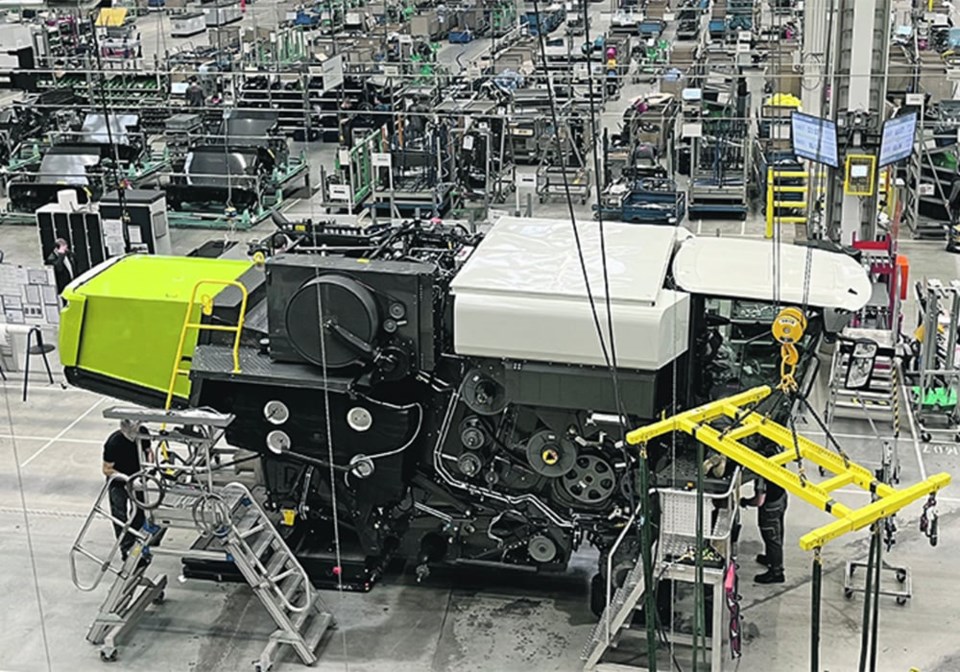WESTERN PRODUCER — A new study by the Breakthrough Institute shows that location of beef production operations can have a significant impact on the carbon footprint of the sector.
Intensifying production where it makes most sense has the lowest impact, according to the study, and supports research showing that grain-finished beef has a lower carbon impact than grass-finished beef.
“There has long been a popular belief that grass-fed beef is environmentally better than grain-fed or confined beef operation,” says Daniel Blaustein-Rejto, lead researcher on the project. “However, for a number of years academic papers have been suggesting the opposite.”
The Breakthrough Institute is an American non-profit think tank that looks for technological solutions to environmental problems. Blaustein-Rejto says it takes no company or industry funding for research such as the beef project.
“When you’re producing beef more intensively, like in the grain-fed system, ultimately there’s less total land required, even considering the corn and soy acres that are needed to produce feed,” he says.
Blaustein-Rejto and his colleagues analyzed about 100 studies from 16 countries to reach their conclusions.
The researchers used regression analysis to determine that using 10 percent more land is associated with a 4.8 percent increase in production emissions, but also a nine percent increase in carbon footprint, including production emissions, soil carbon sequestration and carbon opportunity cost.
The researchers say that for the first time, they also looked at what they call carbon opportunity costs — the potential carbon impact of land remaining in a different state than beef production.
This highlights the issue of increased demand being filled by areas with new production, versus being filled in places where beef is already produced.
Most studies of carbon impact and cattle don’t account for carbon sequestration of land if it is turned back into natural vegetation such as forest, or the potential of grazing cattle to sequester carbon, he says.
“In the coming decades, demand for food, including from beef and other animal products, is expected to keep rising,” says Blaustein-Rejto.
That pressure can only be filled in two ways: increasing intensification and yields or increasing land footprint.
“Unfortunately, a lot of new production even today around the world happens through extensification, through farmers converting grasslands and other lands to pasture and to cropland,” he says.
It’s better to intensify current production systems that have lower impact, as has been done in Canada and the United States where grain is used in the final growth phase of animals, he says.
In fact, choosing to use land in a less productive way, where it makes sense, tends to shift production to areas where more harm can occur.
Brazil illustrates the point. Forests in that country are converted to grassland and cropland. That’s driven by demand pressure from the rest of the world, and by policy changes, such as when a significant proportion of the American corn crop is used for ethanol versus livestock feed, or when European countries increase regulations on farms.
Western Canada’s system of using native prairie grassland for grazing doesn’t fit the assumption that any land use change that is better for cattle will be negative for the ecosystem and carbon.
“Maintaining carbon in the soil root system by preserving grasslands is really important for a number of environmental and ecological reasons, including carbon sequestration,” says Blaustein-Rejto.
“So certainly, I can imagine that there are cases where preserving grasslands may be ultimately beneficial. It’s not something our study sheds much light on, especially in the Canadian context.”
Most Canadian cattle, while raised for most of their lives on pasture, are finished using grain in feedlots.
The study also looked at the carbon impact of grazing cattle to market weight and concluded that the other carbon negatives in the production system outweigh any sequestration benefits from grazing cattle.
The bottom line for Blaustein-Rejto is that higher productivity has environmental benefit, no matter the type of operation, compared to expanding production in new areas.




